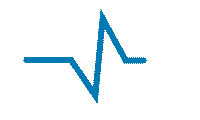RADIOLOGY IMPORTANCE
- Surgery
- Pediatrics
- Obstetrics
- Oncology
- Trauma-response
- Emergency medicine
- Infectious disease
Magnetic Resonance Imaging (MRI)
Computed Tomography
X-ray (Radiography)
Ultrasound
Nuclear Medicine
RADIOLOGY SUBSPECIALTIES
Diagnostic Radiology:
- Computed tomography (CT) or computerized axial tomography (CAT) scan, including CT angiography
- Fluoroscopy, including upper GI and barium enema
- Magnetic Resonance Imaging (MRI)
- Magnetic Resonance Angiography (MRA)
- Mammography
- Nuclear medicine includes tests like bone scan, thyroid scan, and thallium cardiac stress test
- Plain x-rays
- chest x-ray
- Positron emission tomography (PET imaging) PET scan, or PET-CT
- Ultrasound
Interventional radiology:
- Angiography or angioplasty and stent placement
- Embolization to control bleeding
- Cancer treatments including tumor embolization with the help of chemoembolization or Y-90 radioembolization
- Tumor ablation with the help of radiofrequency ablation, cryoablation, or microwave ablation
- Vertebroplasty and kyphoplasty
- Needle biopsies of different organs, such as the lungs and thyroid gland
- Breast biopsy using stereotactic or ultrasound techniques
- Uterine artery embolization
- Feeding tube placement
- Venous access catheter placement, such as ports and PICCs
BOOK AN APPOINTMENT
Meet Our Specialists


DR. M BALAJI VARAPRASAD
Qualifications: MBBS, MD
Occupation: Consultant Radiologist

DR. PRABUDDHA J DAS
Qualifications: MBBS, DNB ( Radiodiagnosis) FRCR, MNAMS
Occupation: Sr. Consultant Radiologist
Education & Qualifications: • MBBS • DNB (Radiodiagnosis) • FRCR (Fellowship of the Royal College of Radiologists) • MNAMS (Member of the National Academy of Medical Sciences)
Publication & Certifications: • Research paper published in Journal of Diagnostic Medical Ultrasonography. • Case study published in Austin Journal of Clinical Case Reports. Awards & Achievements: • Citation from Apollo Hospitals in 2022. • Two students under his mentorship received Outstanding Research Certificates from the National Board of Examinations.
Experience: • Currently working as Sr. Consultant, Dept of Radiology, Kamineni Hospitals, LB Nagar. • Worked as St. Consultant, Dept of Radiology, Apollo Hospital, Jubilee Hills from July 2013 to November 2022. • 1 year 6 months teaching experience as Senior Resident, Deptt of Radiology, GB Pant Institute of Post Graduate Medical Education and Research, New Delhi (affiliated to Maulana Azad Medical College, Delhi). • 1 year 6 months teaching experience as Senior Resident, Deptt of Radiology, ESI Hospital & Post. Graduate Institute of Medical Science and Research, Basaidarapur, New Delhi (teaching). • 3 months as Senior Resident, Deptt of Radiology, Mata Chanan Devi Hospital, Delhi. • 4 months in BBS Mediscanners, Cooch Behar, West Bengal. • 3 years as DNB Radiodiagnosis post graduate student in Guwahati Neurological Research Centre, Guwahati, Assam. • 1 year as non-PG-resident in Chest & TB Deptt, Silchar Medical College, Silchar, Assam. • 8 months as non-PG-resident in Cardiology Deptt, Silchar Medical College, Silchar, Assam
More Info:

DR. RAVI CHETAN SHASHIKANT
Qualifications: MD, DM (Neuro – Radiology)
Occupation: Consultant Neuro-Radiologist
Expertise: General Radiology- Well Versed In Conventional Radiology, USG And Doppler Studies, Cross-Sectional CT/MR Imaging , Subspecialty – Neuro-Radiology Expertise In MR And CT Neuro-Imaging, Angiography, MR Perfusion, Spectroscopy, DTI & FMRI.

DR. SRINADH BOPPANA
Qualifications: MBBS, MD
Occupation: Consultant Radiologist

Dr. Sri Pavani B
Qualifications: MBBS, MD (Radiodiagnosis)
Occupation: Consultant Radiologist

Dr. Mohammad Fahad
Qualifications: MBBS, MD, FVIR
Occupation: Diagnostic & Interventional Radiologist
Expertise: - Gained experience in conducting and Interpreting Radiological Procedures needed for diagnosis and treatment, such as X-Ray, Ultrasound, CT Scans & MRI. - Experience gained in performing various Vascular & Non Vascular Interventional Radiology Procedures including TACE, TARE, TIPSS, Arterial Embolization, PTBD and Biliary Stenting, Management of Haemodialysis Access, UFE. - Newer Procedures like Prostate Artery Embolization & Various CT and USG guided Procedures, Including CT guided Biopsies, Nerve Blocks, USG Guided Biopsies, MWA, Varicose Vein Ablation and Sclerotherapy and Various Drainage Procedures.
Doctor Talks

Patient Talks

Media & News

Stay updated! Browse our Media & News releases for exclusive insights through our thoughtfully crafted press releases.











